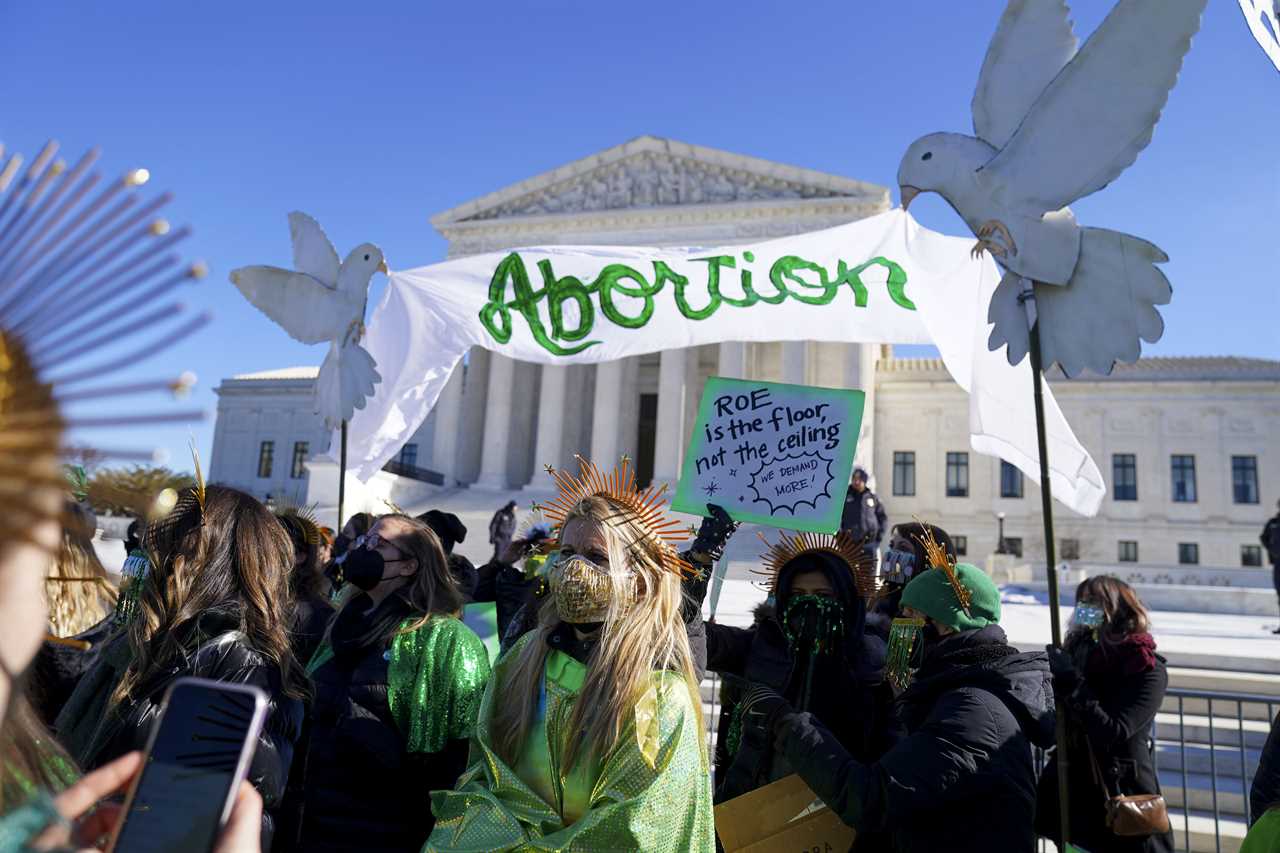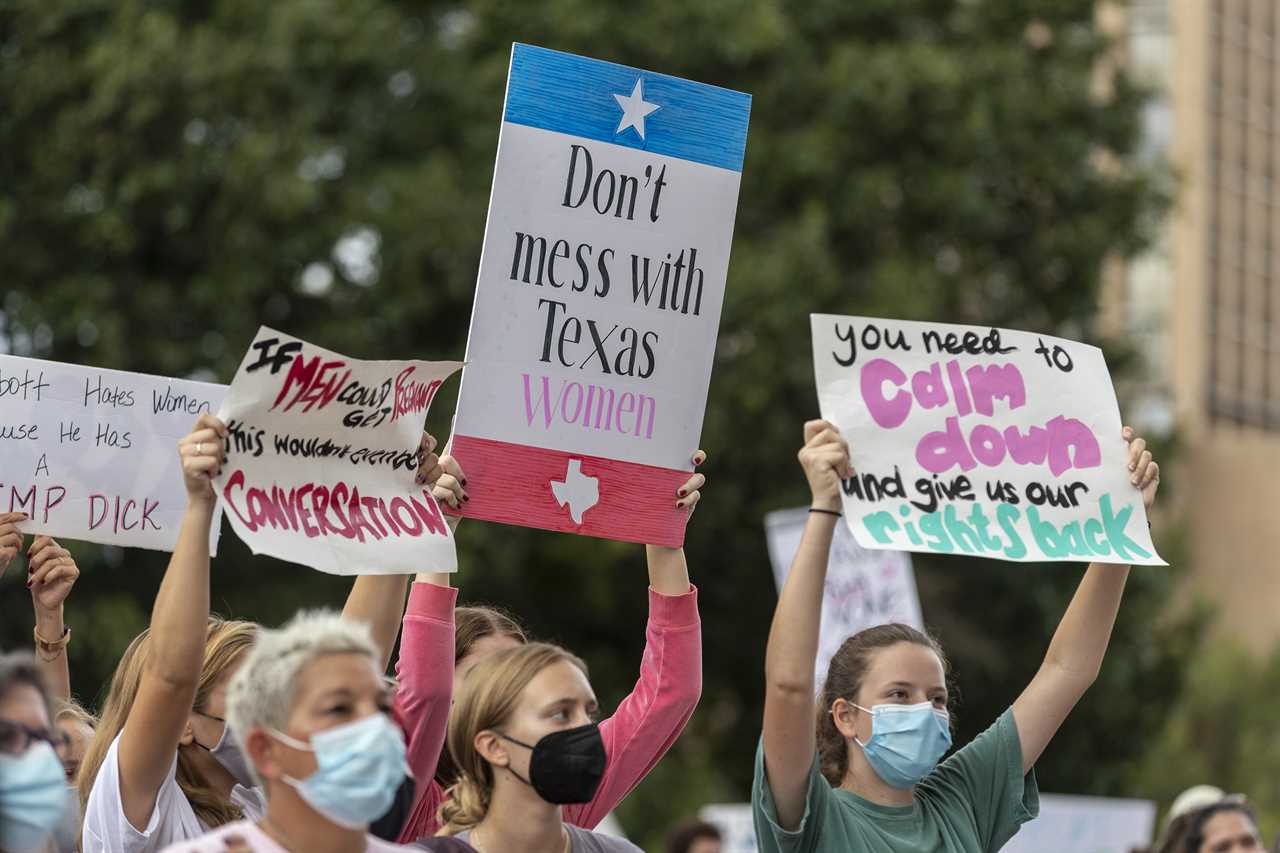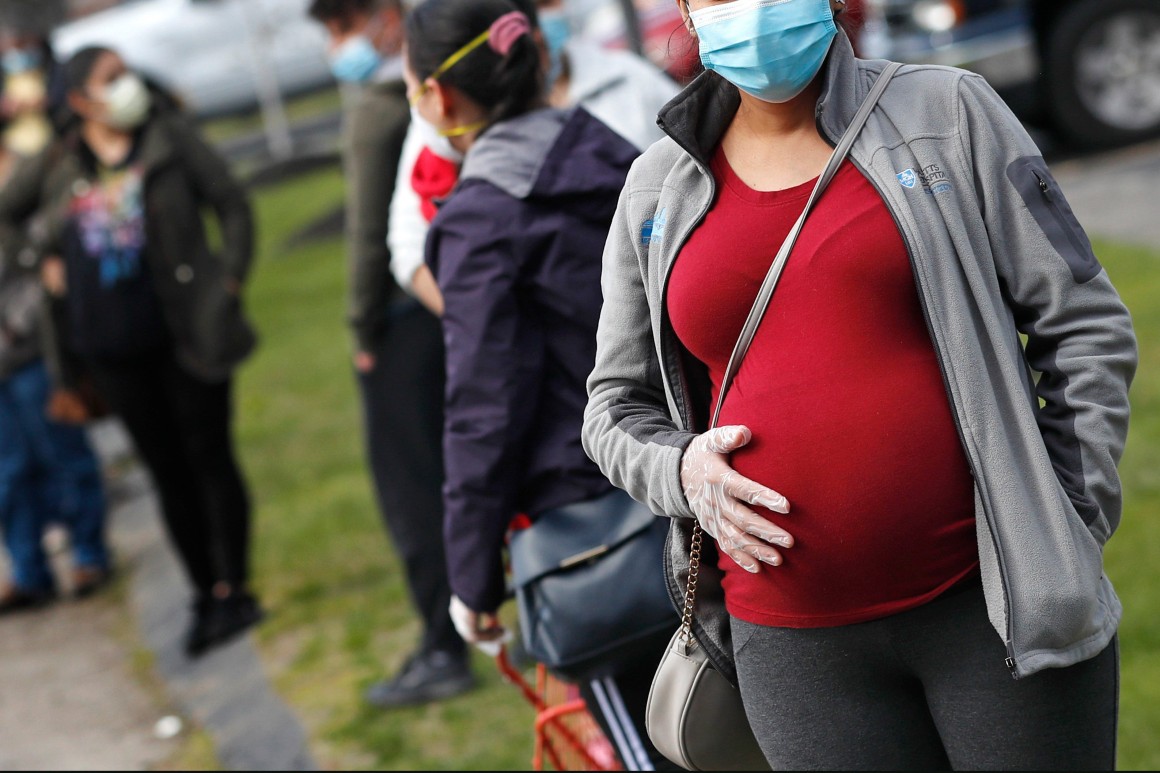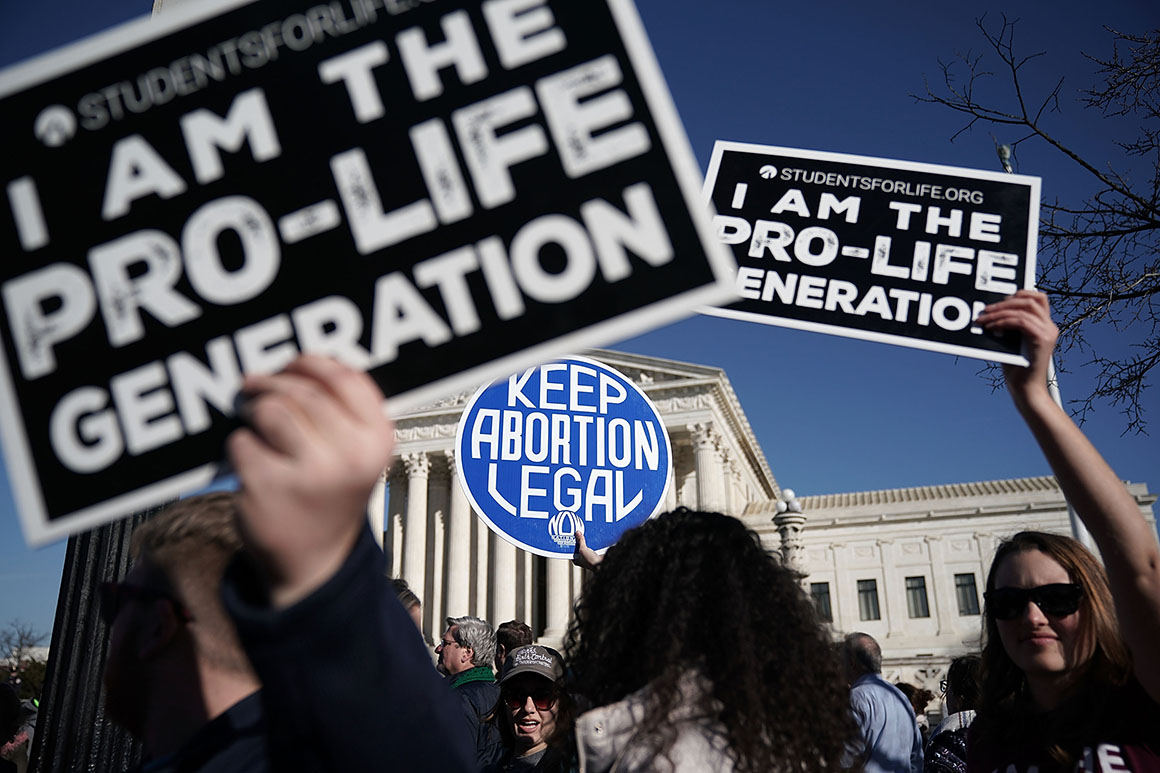
In 1942, my grandmother lay in a hospital bed in center city Philadelphia waiting to die. She was 26 years old, happily married, and pregnant with her first child. Only something went horribly wrong in the last trimester, and suddenly, both she and the baby were in a fight for life.
My grandfather, distraught but resolved, begged the attending physicians to do whatever it took to save my grandmother’s life, even if that meant the life inside her wouldn’t survive. But in those days that wasn’t always the practice; this was also a Catholic hospital, which forbade such a practice because it was considered tantamount to abortion. My grandfather was told she would be kept comfortable, and they would monitor both mother and baby, but that nothing would be done to privilege her life over that of their unborn child. In the end, my grandmother pulled through — barely — but sadly, the baby did not.
Flash forward six and a half decades.
It’s 2008, and I’m lying in a hospital bed in the center of Boston’s medical district also facing death. The cause was a spontaneous coronary arterial dissection that caused me to have two heart attacks in one week. At the time, not much was known about the condition. Relying on scant medical literature, all the doctors could tell me with “some degree of confidence” was that SCAD seemed to be linked to hormones and pregnancy and that getting pregnant would almost certainly be “life-changing, life-ending.”
Flash forward one more year. Despite the odds and every effort to prevent it, I discovered I was pregnant. I was 34 years old, also married, and now also in a fight for life.
But here’s the thing: I wasn’t in the same immediate, actively dying, distress that my grandmother endured all those years before — the kind often associated with the “life of the mother” exception to abortion restrictions, called the “life-or-health” exception in legal circles. To look at me, having healed from the damage caused by the heart attacks, I was healthy and ambulatory. And yet a team of medical professionals — from cardiologists to cardiac geneticists, high-risk OB-GYNs, endocrinologists, rheumatologists and medical ethicists — all said that carrying this pregnancy would be tantamount to suicide.
I’ve thought a lot about the “life of the mother” exception over the last 14 years, not only at a personal level, but also professionally; I’ve worked as a clinical ethicist and chaplain. I’m also a researcher on moral injury, the psychospiritual trauma caused when a person’s deeply held values, beliefs, or ways of being in the world are violated. That violation could result from things the person did themselves, things they witnessed, things they were made to do against their will or better judgment, or things they couldn’t stop from happening.
For decades, rape, incest and preserving the “life of the mother” were rationales for abortion generally accepted by most Americans including those who opposed abortion in other circumstances. But most of the new wave of anti-abortion legislation that’s been triggered by the expectation that the Supreme Court could soon overturn Roe v. Wade challenges this tradition by doing away with the rape and incest exceptions. These laws do, however, claim to maintain the “life of the mother” exception.
Only they don’t — or they don’t necessarily maintain it in practice, thanks to subtle shifts in language, a seeming attempt to further narrow the circumstances in which a pregnancy can be terminated.
First, despite these laws being more restrictive, their language is so ridiculously vague, often lacking medical meaning, that it is open to interpretation with potentially deadly consequences.

Take for example Texas’ “heartbeat” bill, SB 8, which bans abortions after a fetal heartbeat has been detected. SB 8 says the law “does not apply to a physician who performs a partial-birth abortion that is necessary to save the life of a mother whose life is endangered by a physical disorder, physical illness, or physical injury, including a life-endangering physical condition caused by or arising from the pregnancy.” Or Alabama, where a doctor can “deliver the unborn child prematurely to avoid a serious health risk to the unborn child’s mother.”
Nothing in these laws specifically outlines what constitutes life-endangering or how “serious” a circumstance must be in order intervene. For physicians, who can now be fired and sued for “aiding and abetting” an unlawful abortion, this ambiguity may be determinant: Not only could it dissuade a person from performing an abortion, but also it could delay them performing one; for instance, while hospital attorneys or even government officials are consulted to determine the legality of the procedure. Simply speaking, this transgresses nearly every basic medical ethics principle — namely autonomy, nonmaleficence, beneficence, and justice — with a pregnant person’s life hanging in the balance.
Second, consider the language “medical emergencies,” which is increasingly being used both in law and common parlance. Mississippi’s contentious abortion law defines medical emergencies as “a condition that in the physician’s good-faith medical judgment, based upon the facts known to the physician at that time, so endangers the life of the pregnant woman or a major bodily function of the pregnant woman as to necessitate the immediate performance or inducement of an abortion.” The problem is that not all conditions that threaten a pregnant person’s life are active emergencies when they are known, treated, and managed — as my own situation shows.
SCAD is a “known physical condition,” often associated with pregnancy, that can cause a heart attack, a “life-endangering” condition, and sudden death. By this definition, the law should apply to someone like me. But pregnancy, in and of itself, did not catapult me into a real-time, immediate threatening situation, where my vital signs had become dangerously low, and death’s presence was pounding wildly on my life’s door. It was more hovering in the shadows, like a wraith.
The same is true for other medical conditions. According to the Mayo Clinic, a person is at increased physical risk, even death, during pregnancy if they have heart disease, stroke, high blood pressure, heart or blood disorders, bleeding abnormalities, various cancers and ectopic pregnancies. For people with certain cardiovascular disease conditions, like Eisenmenger's syndrome and pulmonary hypertension, carrying a pregnancy could cause as high as a 40 percent risk of maternal death.
Roe v. Wade holds that after fetal viability, a state may “regulate, and even proscribe, abortion except where it is necessary, in appropriate medical judgment, for the preservation of the life or health of the mother.” Currently, 26 states rely on “physical health” (that being a person’s physical functioning, not to include mental and emotional health) to meet the criteria. This means permitting an abortion when the pregnant person suffers from a condition that risks “substantial and irreversible impairment” or “imminent peril” of a “major bodily function.”
On the surface, the subtle shift in language from “imminent” to “immediate” may seem negligible, but in practice it could mean the difference between life and death. “Imminent” is defined as highly probable or close at hand — like my situation and other high-risk medical conditions. And yet, as legal scholars have pointed out, “imminent” is not the same as “immediate.” Immediate danger is that which occurs at once, with no delay — that real-time, actively dying danger that my grandmother experienced. Immediate is not separated by time and space, whereas imminent is.

As it exists, the “life of the mother” or medical emergency exception allows the state’s interest in fetal life to yield to a pregnant person’s right to self-preservation. And it’s the province of the courts to determine what “self-preservation” means, even if they haven’t clearly done this to date.
With the U.S. Supreme Court now poised to greatly alter or overturn Roe, legal scholars and advocates on both sides acknowledge that doing so would instantly change the standard for abortion legislation. According to the Guttmacher Institute, a nonprofit research center that supports abortion rights, if Roe is upended, these same 26 states are certain or likely to ban abortion, many of which already have the legal infrastructure in place. Twelve of these states have “trigger bans” that will automatically go into effect, while four more have recently introduced measures to create them. Five states have pre-Roe abortion bans that could become enforceable again. Encouraged by the success of recent post-Roe restrictions, other states, such as Florida, Ohio, Missouri, Alabama, Arkansas, Oklahoma, Arizona and Wisconsin, have investigated emulating laws like Texas and Mississippi, with more states expected to introduce similar legislation in the coming weeks. In 2021, the U.S. saw the highest number of abortion restrictions enacted in a single year — each with linguistic shifts pertaining to the medical exemption that could determine whether people like me live or die. Will lawmakers consider the “life of the mother” only in terms of an immediate injury being treated in the ER? Or will they make room for less visible but equally deadly situations like the one I faced?
In a perfect world, or at least as I imagine one, there would never be a need for another abortion. Life, in all its various forms, including a potential, unborn life, is to my mind meaningful, and therefore worthy of consideration. For myself, and for many people I’ve spoken to, worked with, and counseled over the years who have terminated a pregnancy, the experience can also be deeply emotional, often painful, profoundly intimate, and sometimes morally injurious, even for those who don’t regret their decision. I’ll be honest, I fear for a society that doesn’t respect the sanctity of life and where swaths of the population find it a badge of honor to tout the number of abortions they’ve had or lob comment-bombs at anyone on social media who expresses a driblet of gravity or sadness over the experience.
But I’m enough of a realist to know that utopias don’t and will never exist — not in this world or lifetime. Human bodies, minds and hearts are inherently flawed and vulnerable to all manner of influence. Sometimes things happen that we don’t desire; sometimes they happen despite our best intentions or efforts; sometimes they have nothing to do with our active involvement.

And so, I admit I also fear for a society where the government would be allowed to play God, quite literally, by determining the conditions, particularly the physical conditions, under which it may be necessary to preserve my (or others’) life. Despite the government’s wont to be omniscient, it is anything but. This is also particularly concerning given the changing nature of medical science and the tsunami of partisan politics.
With trends as they are, and the swell of anti-abortion confidence thanks to the Supreme Court’s conservative majority, I now find myself worrying for people who are or may become pregnant — whose ability to preserve their life due to a “meaningful life-endangering physical condition, disorder, or injury” — however they and their doctors determine it — would be usurped by activist legislatures or justices and future courts that would ensconce as precedent the most extreme definition of “medical emergency.”
There are at least three reasons this is unethical. First, it would essentially force physicians to wait until their patients are facing a perilous medical situation in order to end a pregnancy — and it’s generally a violation of medical ethics to wait for patients to get worse before they do something to make them better. Second, it infantilizes women and other pregnant people by presuming the courts know more and better about their health. Lastly, it can make an already dangerous situation worse. For instance, knowing that carrying a pregnancy could, at any moment, cause another heart attack to my already vulnerable body, and that it would more than likely result in death for both of us, was, for the 13 weeks I was pregnant, another kind of torture. The stress alone, I was told, could very likely cause a heart attack, especially as it accumulated over the months of gestation.
I would have loved nothing more than to see my pregnancy to term. But in some instances, it is simply not the wise or “pro-life” response that many would have us believe. Deciding to have an abortion was truly the hardest, most anguishing decision I’ve ever made, and, perhaps surreally, also the most obvious — two lives were at stake and the abortion saved one of them, and, to my eternal grief, the only one it could. I don’t regret the decision to terminate my pregnancy — only that I had to make it. The existential reconciling these decisions beget is a domain for faith and spirituality that ought to reside with the pregnant person; it is not a domain for the law or the government.
When faced with impossible odds or an impossible situation, we sometimes have no other choice than to make impossible decisions. That we make them is not a flaw in our character, a failing of nerve, an easy way out, or a stain upon our soul. Narrowing the “life of the mother” exemption won’t make such anguishing decisions like mine any easier. It would just make them illegal.
----------------------------------------
By: Michele DeMarco
Title: Opinion | The New Abortion Restriction No One is Talking About
Sourced From: www.politico.com/news/magazine/2022/04/28/the-new-abortion-restriction-no-one-is-talking-about-00028171
Published Date: Thu, 28 Apr 2022 03:30:00 EST
Did you miss our previous article...
https://consumernewsnetwork.com/politics-us/warren-tries-to-light-the-fire-of-urgency-for-democrats






